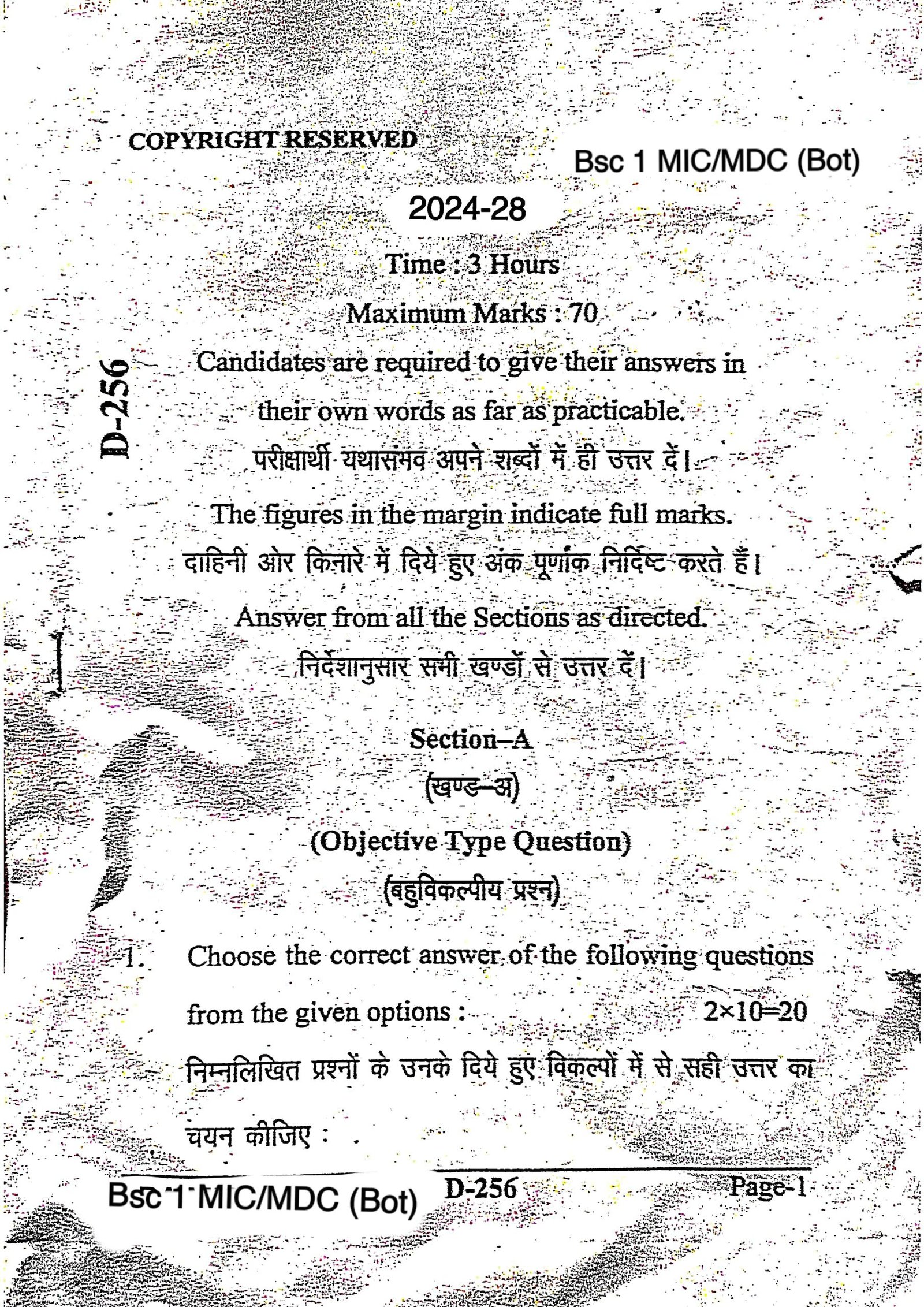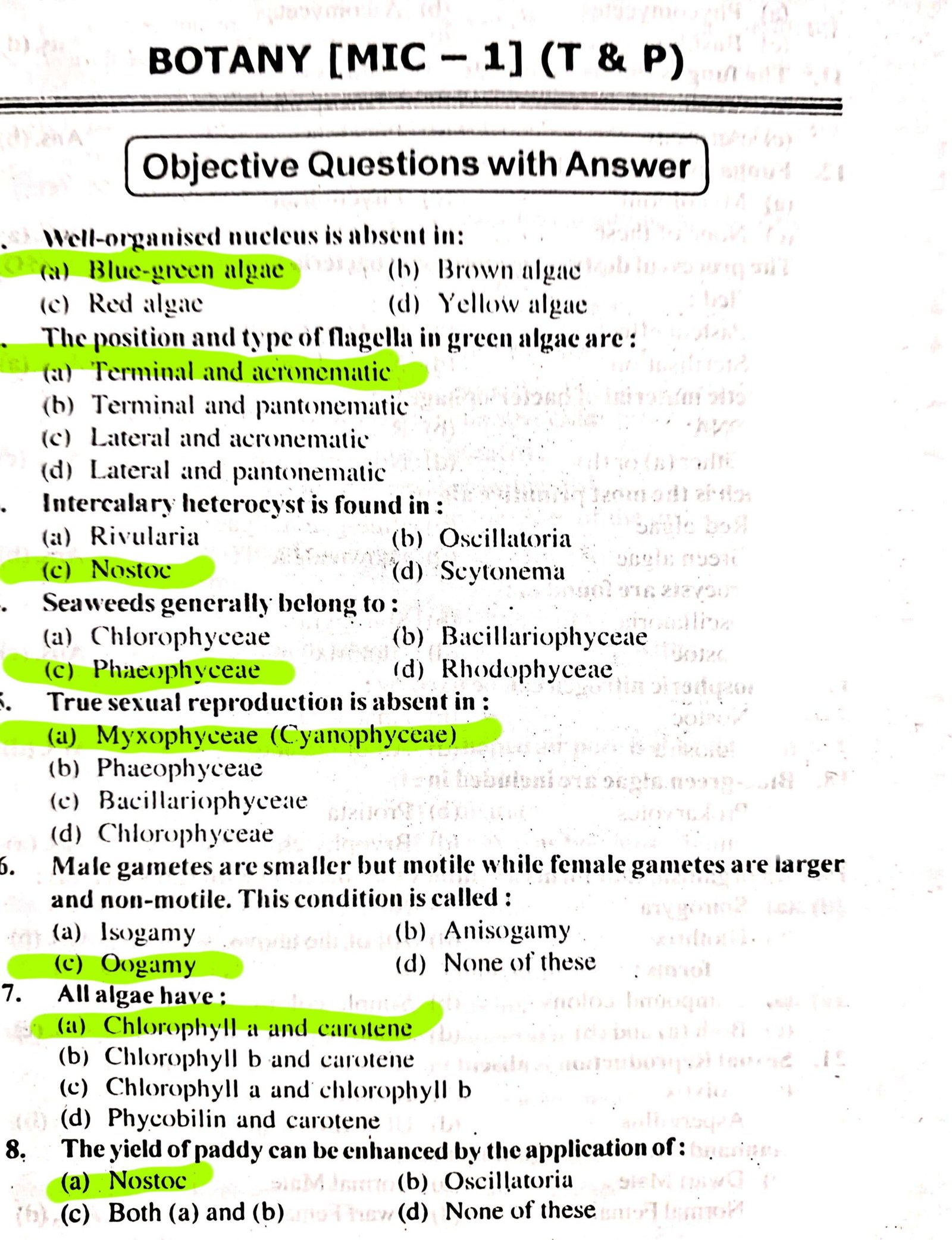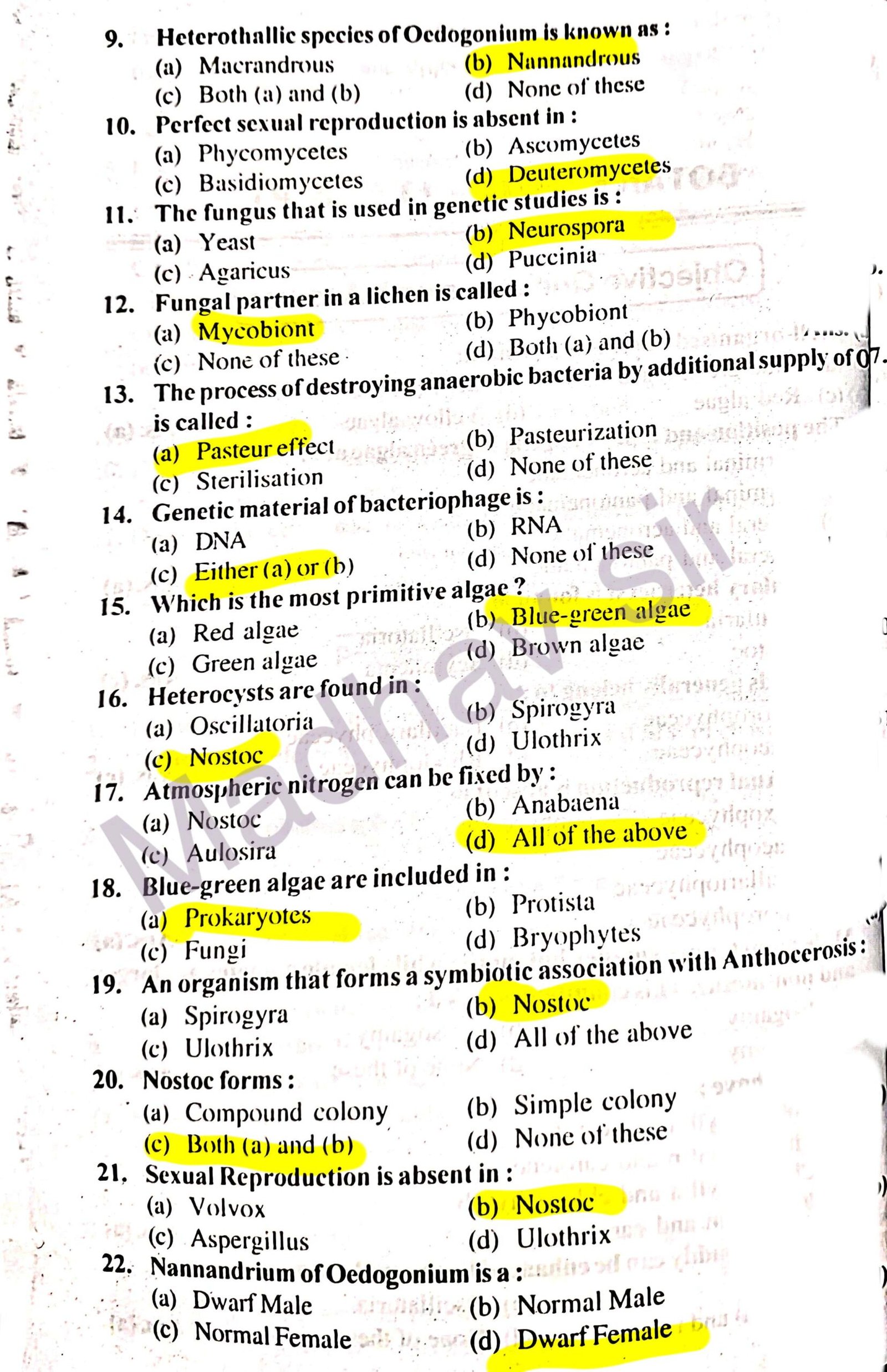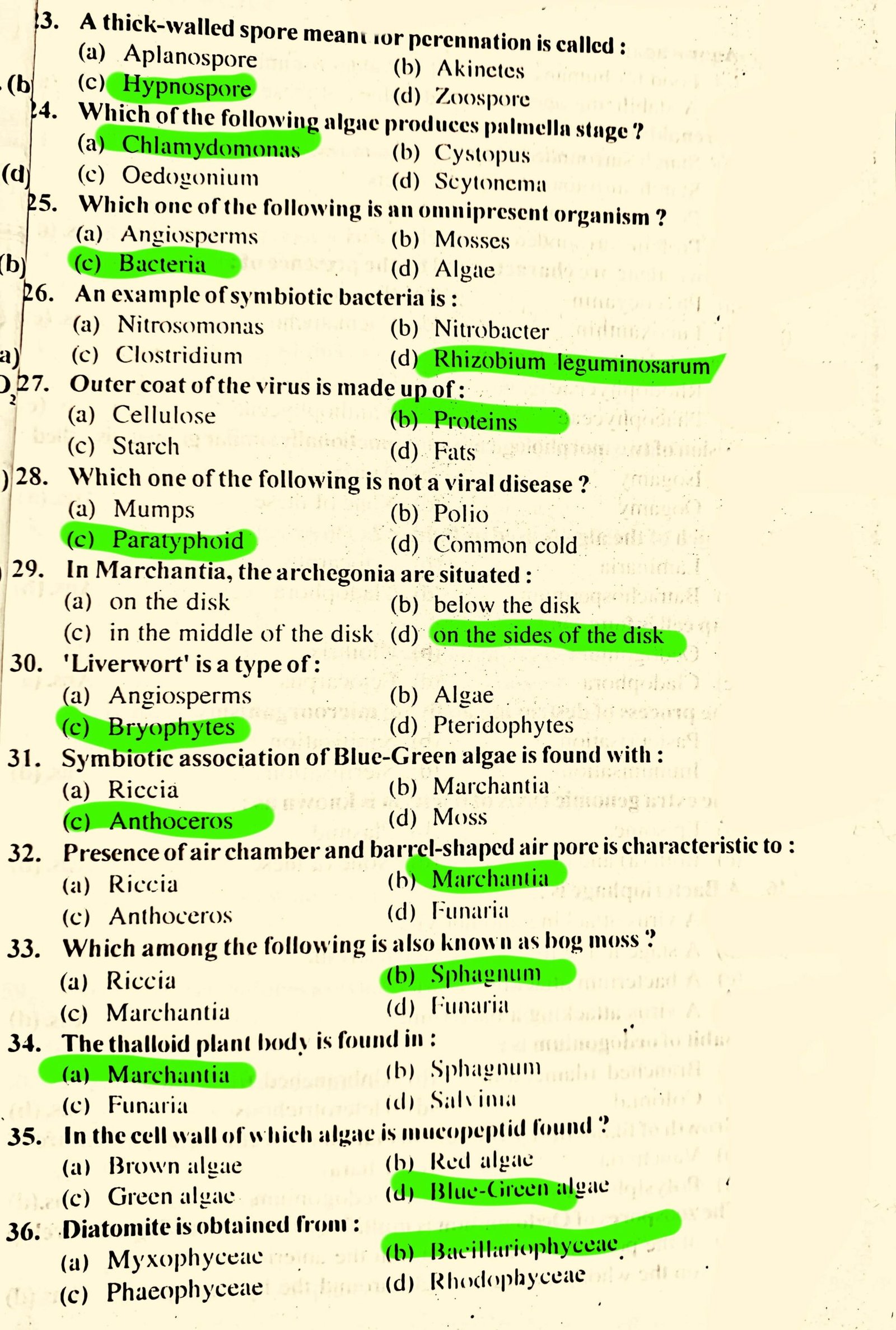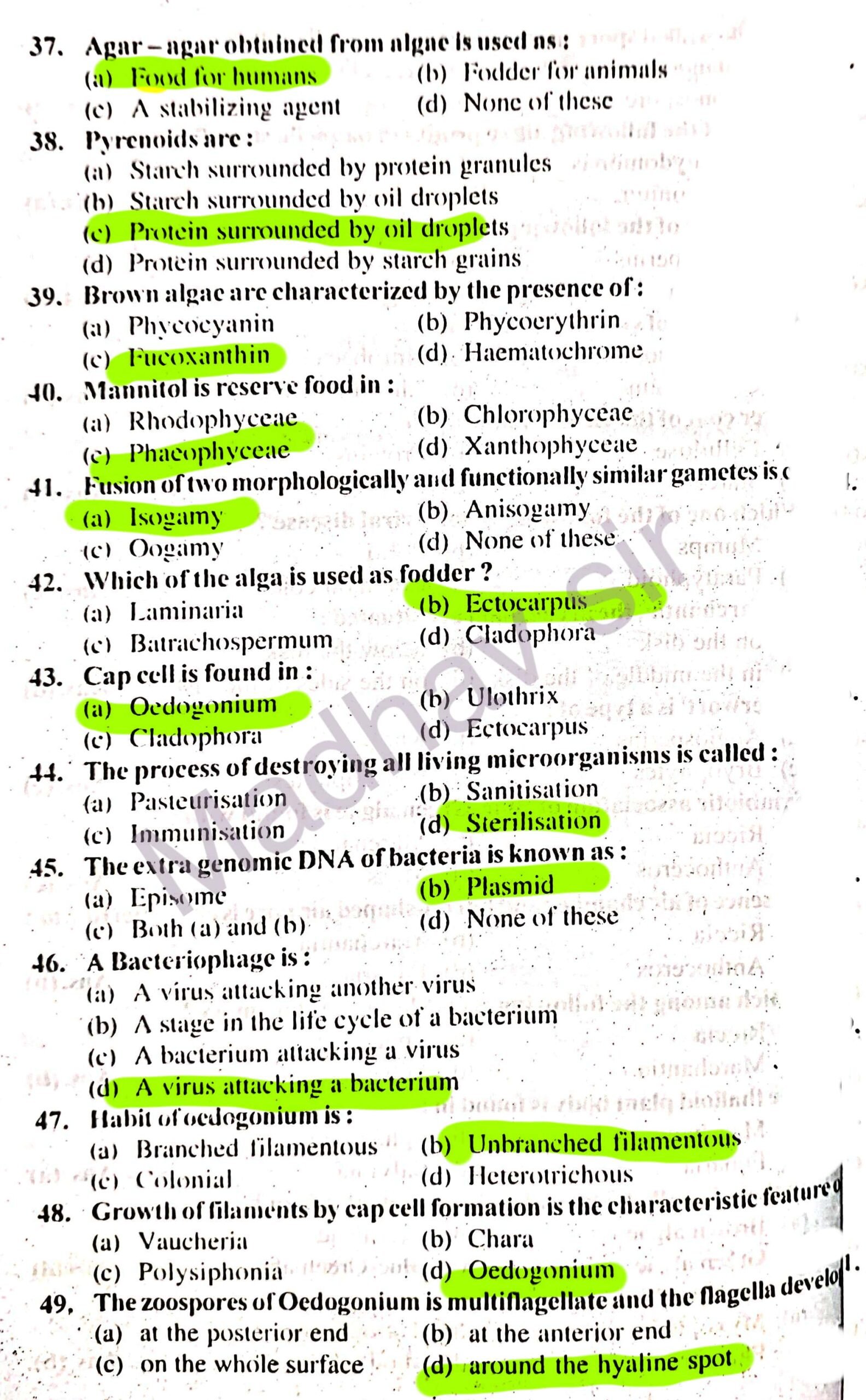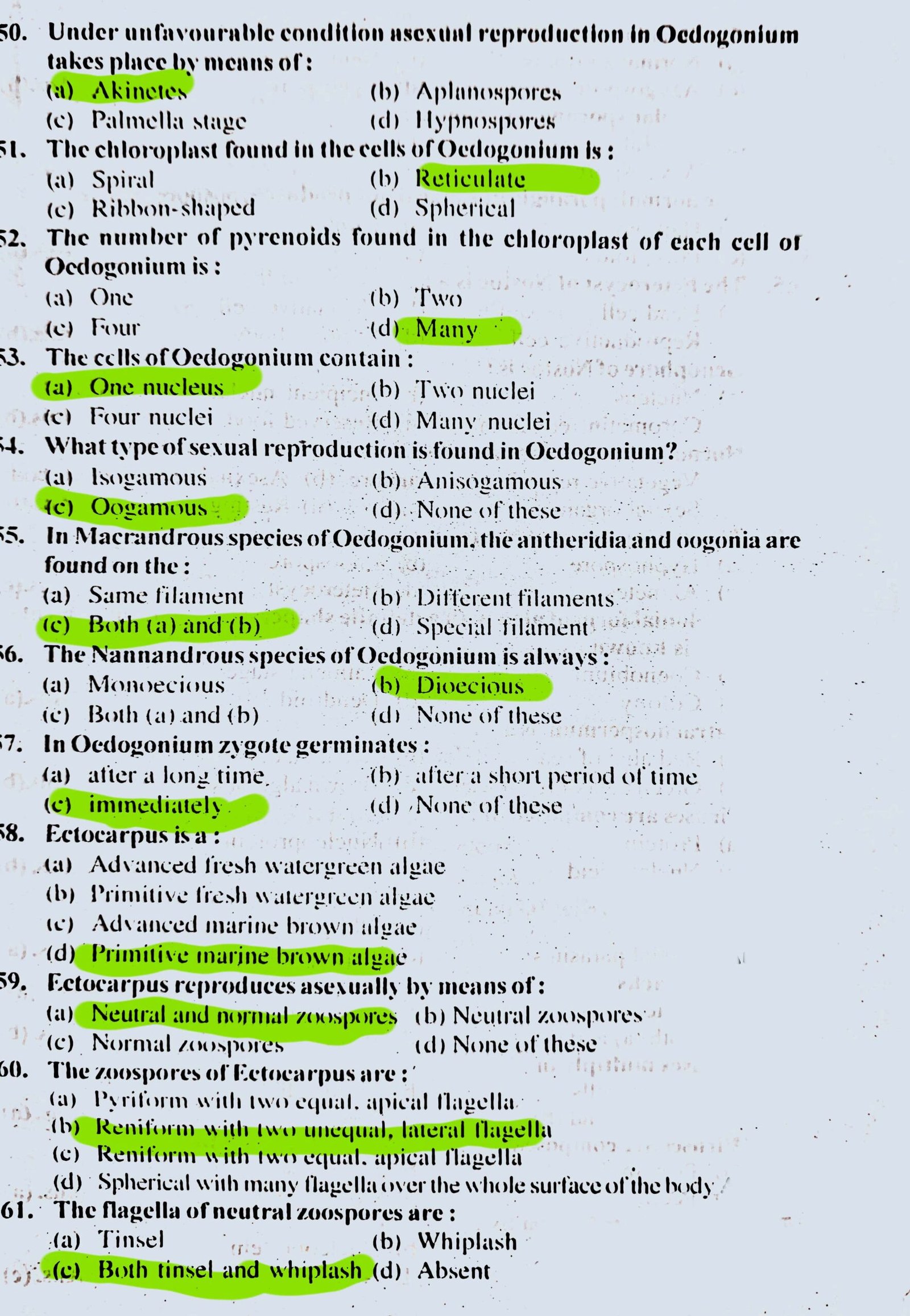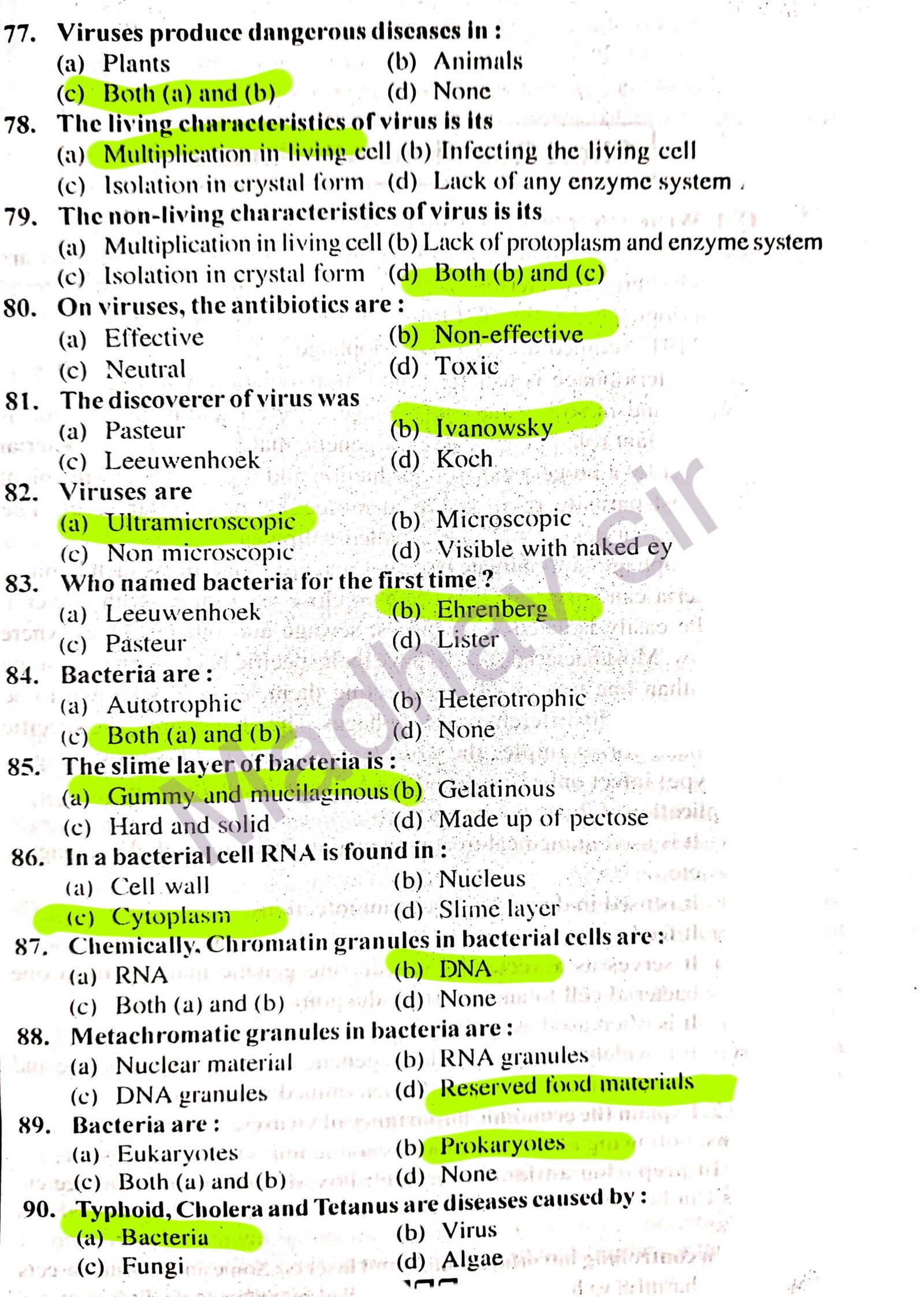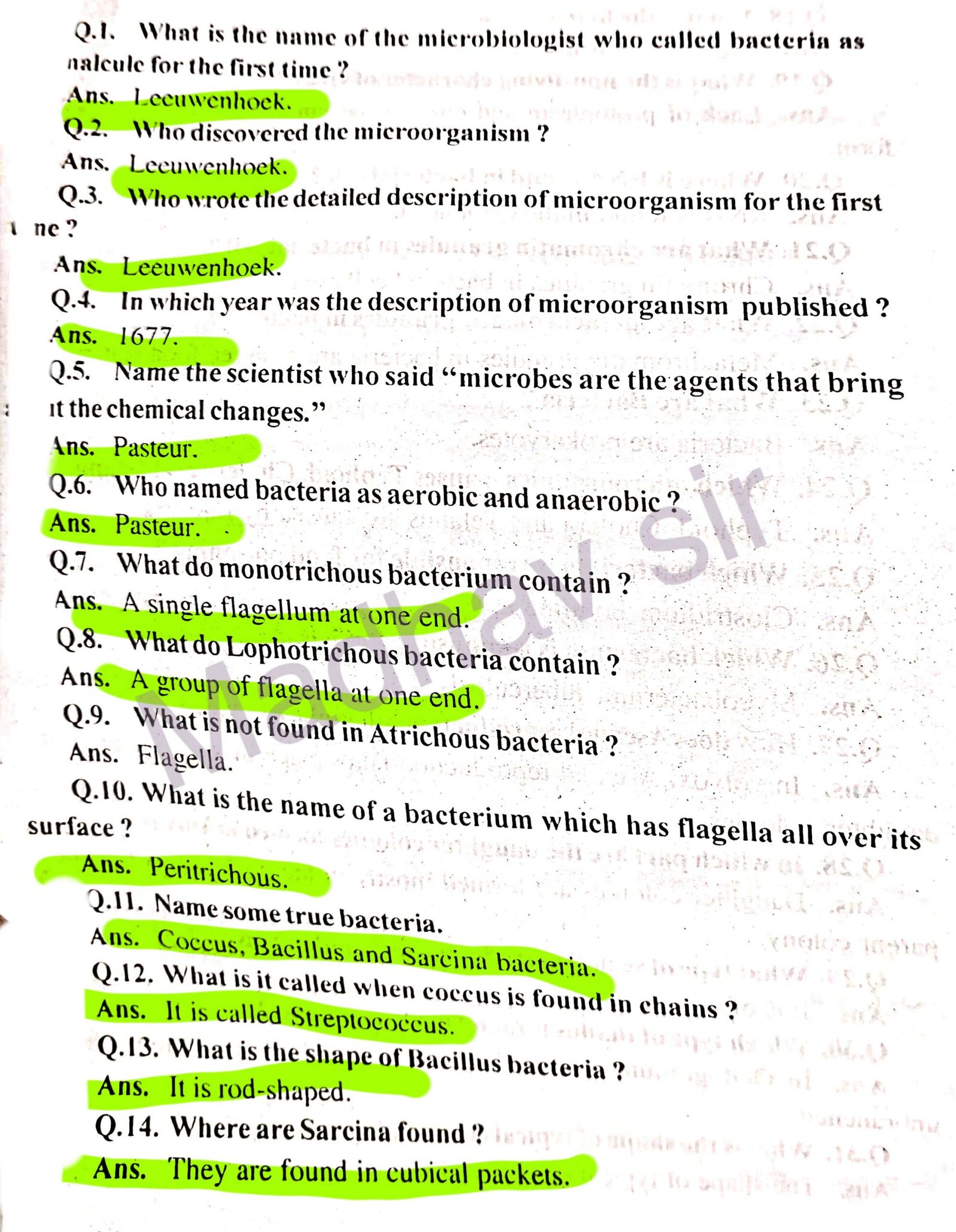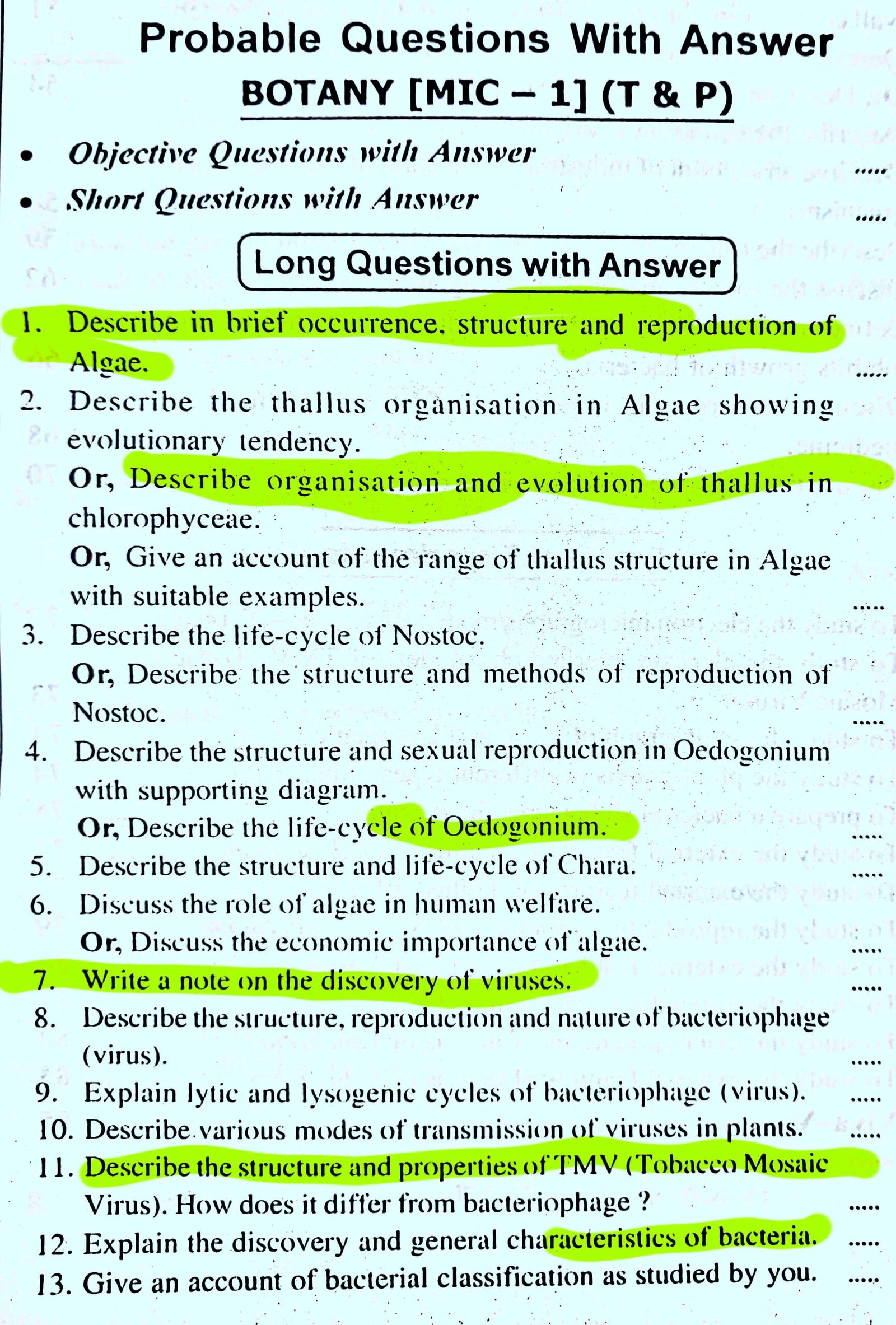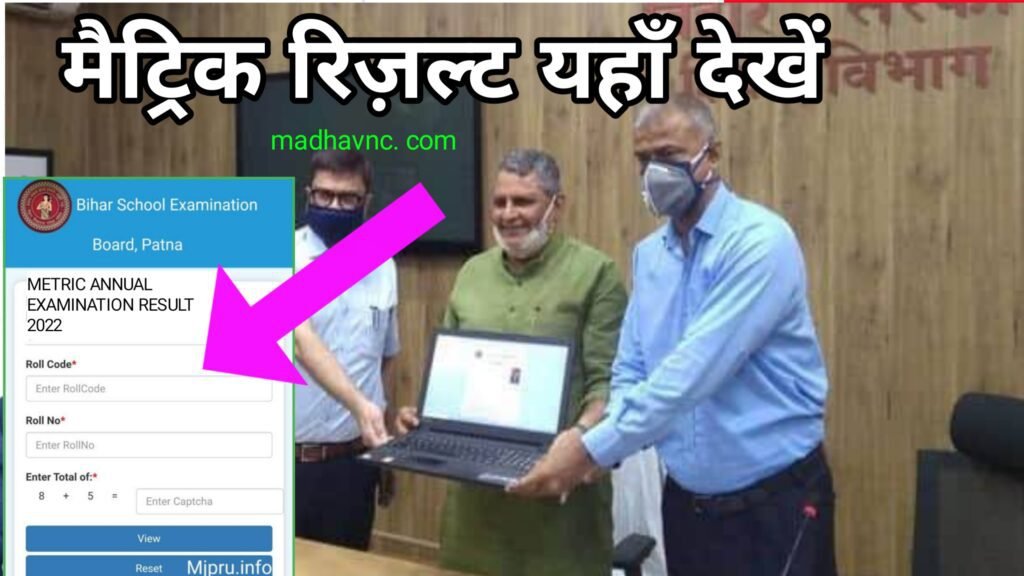Bsc 1st Sem Botany MIC/MDC/ MJC 1 Viral Question Pepper | Botany Bsc 1st Sem Question Pepper Download PDF
नमस्कार साथियों आप सभी का स्वागत है ,एक नई आर्टिकल में दोस्तों इस आर्टिकल में हम फर्स्ट सेमेस्टर के सभी छात्र-छात्राओं के लिए वनस्पति विज्ञान या फिर पादप विज्ञान|
जिसको हम लोग बॉटनी के नाम से जानते हैं| इसका सभी क्वेश्चन पेपर लेकर आए हुए हैं| इस आर्टिकल को समय-समय पर अपडेट भी किया जाएगा,और यहां पर आपको बॉटनी से सारे प्रश्न आपको मिल जाएगा| जिसको आप लोग आसानी से अपने मोबाइल फोन में डाउनलोड भी कर सकेंगे,तो आप लोग इसे वेबसाइट का नाम जरुर याद रखिएगा |यही से आपके प्रश्न मिलेगा, नीचे प्रश्न दिया गया है| यह सारे प्रश्न में आपकी परीक्षा में निश्चित रूप से पूछा जाएगा|
Bsc 1st Semester Exam Details
| Exam Date | 20 January |
| Shift Name | 2nd Shift |
| Timing | 2; 00 – 5 बजे शाम तक |
| Join Now | |
| Teligram | Join Now |
| Botany | Download PDF |
| All Subject | Click Here |

Note – नीचे दिए गए मैराथन क्लास को जरूर देखिए, ऑब्जेक्ट की प्रश्न यहीं से पूछा जाएगा बाकी कुछ सब्जेक्टिव प्रश्नों का उत्तर नीचे दिया गया है| बाकी परीक्षा से कुछ घंटा पहले ओरिजिनल Question भी आपको इसी वेबसाइट पर मिलेगा|
परीक्षा में बैठने से पहले इसे जरूर देखें
साथियों परीक्षा में जाने से पहले दी गई कुछ जानकारी को आप जरूर अच्छी तरह से समझ लें|
आज से शुरू हो रहे LNMU UG 1st सेमेस्टर का परीक्षा में सम्मिलित होने वाले सभी छात्र छात्रों को हार्दिक शुभकामनाएं और बधाई
👉Be Positive 👍😍
👉Best of Luck 🤞ग्रुप एडमिन आपके साथ है
👉परीक्षा हॉल में सकारात्मक मानसिकता के साथ प्रवेश करें और अच्छा प्रदर्शन करें। हमें विश्वास है कि आप अच्छे अंकों के साथ सफल होंगे..
👉कृपया निम्नलिखित बातों का ध्यान रखें:
1.👉 परीक्षा केंद्र पर एक घंटे पहले पहुंचें
2. 👉मूल आधार कार्ड या अन्य आईडी प्रूफ, एक पासपोर्ट साइज फोटो और प्रवेश पत्र लाएं
3. 👉पानी की बोतल और स्टेशनरी जैसे परीक्षा पैड, पेन, पेंसिल, स्केल, आदि ला सकते हैं
4. एक साधारण घड़ी भी ला सकते हैं
5. स्मार्टफोन और चीट शीट (गेस पेपर) परीक्षा केंद्र पर न लाएं, अन्यथा आपको जिम्मेदार माना जाएगा।
6. 👉चूंकि अभी ठंडी का मौसम है, अपने आप को गर्म कपड़े पहनकर परीक्षा केंद्र पर जाएंगे
7. 👉तेज ठंडी से बचने के लिए मफलर, टोपी इत्यादि से अपने सिर और कान को ढक कर रखें….
Botany Bsc 1st Sem Question Pepper Download PDF
Q.1. Describe in brief occurrence, structure and reproduction of Algae.
Ans. Occurrence: Algae, an important group of Thallophyta, are
cosmopolitan in a distribution and universal in occurrence. Algae are found on the trunk of trees, on telephone wires, on rocks in hot springs and in several other unusual habitats. Algae thrive well in snow and geysers. The most favourable habitat of algae is salt water.
Structure: In the organization of the plant, algae exhibit a greal
diversity. The size of the algae is very much variable. A huge size laminariales occurs from a microscopic unicellular Chlamydomonas. Chlamydomonas is the most primitive algae. Volvox is microscopic and multicellular. which is found in colonial forms. Cladophora is branched, while Ulothrix and spirogyra are unbranched among the filamentous forms.
Reproduction:
Stem (i) Vegetative reproduction: This is the process of propagation in which
portions of the plant body are separated to give rise to new individuals without any change in the protoplast.
(ii) Asexual reproduction: This reproduction takes place by the
following methods:
(a) By Zoospores: These are the common occurrence in algae, and are
formed in the favourable conditions. They are practically similar to parent cell and are liberated by breaking up of the mother cell wall. Zoospores are formed from certain older cell of filaments. To form Zoospores. the older cytoplasm is divided to form zoospores which escapes from the mother cell wall. Zoospores are always motile.
(b) By Akinetes: In this case, the protoplast of a single cell converts in a single akinete. Sometimes they are formed in chaims. Lach akinete may develop into a new plant. e.g. oedogonium, ulothrix, and members of my sophyceae.
(с) Ву Пурnospores: When the aplanospores undergo a long resting period and become thick walled, they are said to be hypnospores e.g. Pediastrum & sphaerella.
(d) Palmella Stage: Sometimes the zoospores do not come out of the
mother cell but they remain surrounded by a mucilaginous sheath inside the mother cell. On division, they form colony-shaped structure called the Palmella. On liberation, they form new plants e.g. chlamydomonas
(e) By Endospores: They are formed within the cells in many blue- green algae and bacillariophyceae.. Each endospore develops in a new individual on the approach of favourable conditions.
(f) By Aplanospores: Aplanospores are the eliminated bodies of motile phase of Zoospores. They develop in unfavourable conditions.
14. Draw a neat labelled diagram of a typical bacterial cell to show the detailed structure and describe the function of important organelles.
Or, Describe ultrastructure of bacterial cell.
15. Discuss the structure of bacterial cell wall. Mention the cell wall composition of gram-positive and gram-negative bacteria.
16. Describe the various methods of reproduction in Bacteria.
Or, Describe the methods of multiplication in bacteria.
17. Describe the economical importance of bacteria.
Or, Give an account of industrial application of bacteria (Micro- organism).
18. Describe the role of microbes (bacteria) in Agriculture.
19. Discuss the role of microbes in nitrogen fixation.
20. Define antibiotics. Discuss the molecular basis of how penicillin inhibits growth of bacteria.
21. Discuss the economic importance of bacteria in food and medicine.
22. Discuss the importance of bacteria in dairy industry
Q.2. Describe the thallus organisation in Algae showing evolutionar tendency.
Or, Describe organisation and evolution of thallus in chlorophyceae.
Or, Give an account of the range of thallus structure in Algae wit suitable examples.
Ans. The members of Chlorophyceae show a great variation in the rang of vegetative structure from primitive microscopic unicellular form to macroscopie multicellular forms. The following are the various type of plan bodies met within this class :
1. Motile forms: These forms of algae are the simplest in the organization of thallus. The simplest type of chlorophyceae are unicellular and remain motile practically throughout their lifetime. Chlamydomonas affords ar example of the simplest form seen in the green algae. They have a spherical unicellular, uninucleate and biflagellate structure with a prominen cup-shaped chloroplast. The cells swim with their flagellat…
Q.6. Discuss the role of algae in human welfare.deft
Or, Discuss the economic importance of algae.
Ans. Role and Importance of Algae:
dai, glsoliment bengong-
(i) As a food for man: Since the pre-historic times, several sea weeds have
been used as direct source of food for human beings. Several freshwater algae have also been utilised in the preparation of various kinds of vitaminized food. As we know well that the fundamental food of sea living stock are algae and
